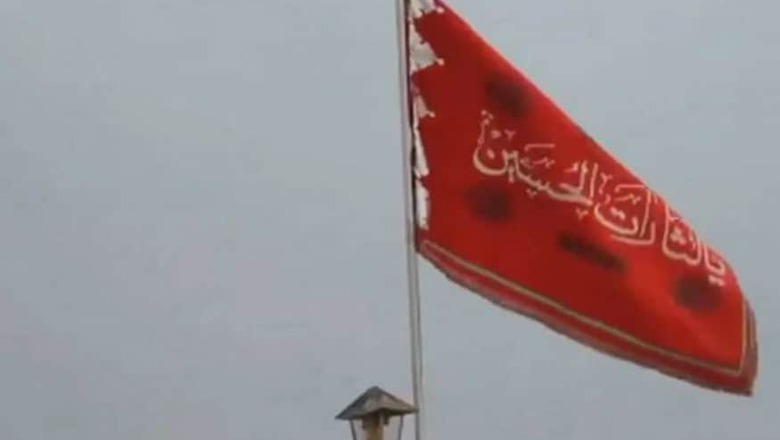
views
Tehran: Massively shared online publications claim that a red flag calling for revenge was raised for the "first time" above a mosque in the Iranian city of Qom, after the death of general Qassem Soleimani, killed by a US air strike. However, this red flag often flies above this mosque, as in the rest of the Shia Muslim world.
What Are We Verifying?
Various Twitter accounts as well as larger media organisations including the Daily Mail, the Times of India and the Daily Express, have claimed that a "red flag," synonymous with revenge, was unfurled for the "first time" in the history of Iran, over the Jamkaran mosque in Qom. A "symbol of severe battle to come," the Daily Express wrote.
What Do We Know?
A red flag was raised above the main dome of the Jamkaran mosque in Qom, a holy Shia city 120 kilometres (75 miles) south of Tehran. The holy site gained importance after supreme leader Ayatollah Ali Khamenei's rise to power in 1989.
The video was created by the mosque's press office. This was confirmed to AFP by Yassine Hossein Abadi, one of the mosque's administrators in charge of cultural affairs.
Contrary to what many of the publications assert, this red flag -- a colour symbolising the blood of martyrs -- is frequently raised in Iran. It is often unfurled above mosques or brandished at religious processions, particularly during the Islamic month of Muharram, which ended on September 29 last year.
The same flag was a common sight in the streets of Tehran on Monday, during the tribute paid to Soleimani, without necessarily implying revenge.
According to Hossein Abadi, the use of this flag at the Jamkaran Mosque is relatively recent. "For the past three years," it has flown over the mosque during the ten days of mourning of the Muharram, during which Shia Muslims commemorate Hussein Ibn Ali, a descendant of the Prophet Muhammad. It is therefore not the first time this flag has flown in Iran.
This time, the flag was unfurled outside the month of Muharram. "Due to the martyrdom of (...)general Qassem Soleimani and his comrades (...) we unfurled this flag so that all (Shia) believers in the world and all the freedom fighters gather around this flag to avenge Qassem Soleimani's blood unjustly shed," Abadi told AFP.
The flag bears the Arabic phrase, "Ya la-Tharat al-Hussein," which can be translated in English to, "O ye avengers of Hussein."
As Muhammad's grandson, Hussein is one of the most sacred figures of Shia Islam, in which he is the incarnation of Justice. He was killed in the year 680 at the battle of Karbala, in present-day Iraq, by caliph Yazid's troops.
What Can Be Concluded?
This red flag is frequently used in Iran during the month of Muharram, or month of mourning, whether flown above mosques or brandished at religious processions. Although it was used on an unusual occasion at the Jamkaran mosque, this was not the first time that this flag was unfurled in Iran.













Comments
0 comment